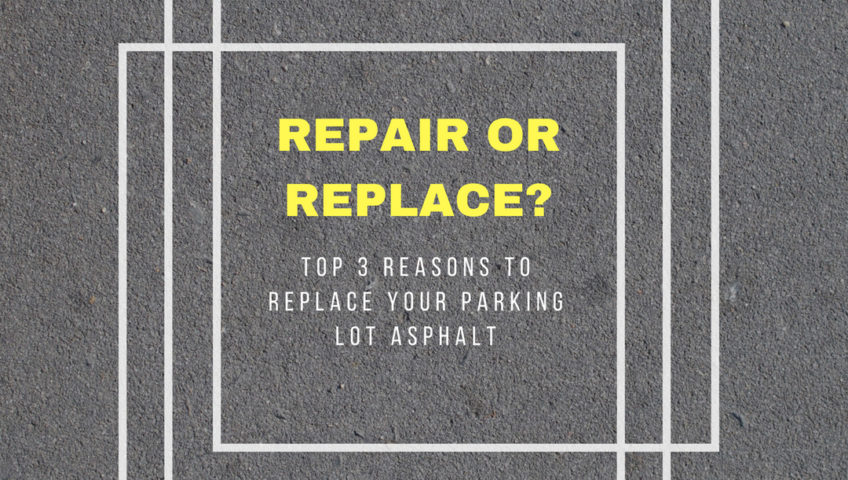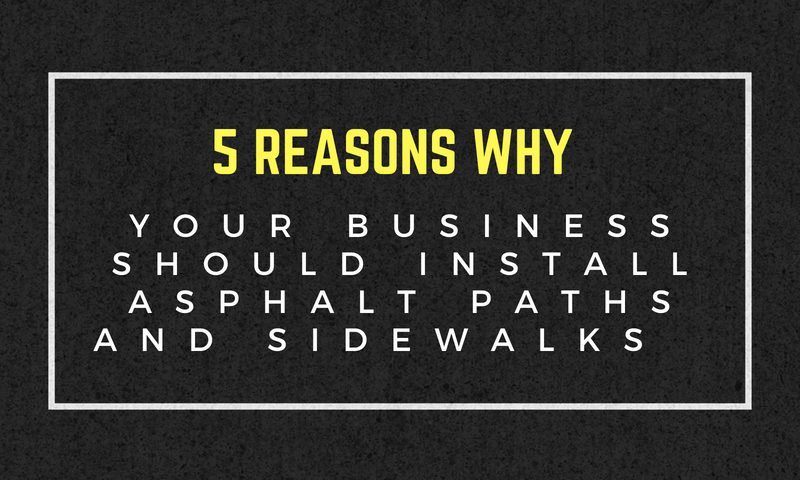
Repair or Replace? Top 3 Reasons to Replace Your Parking Lot Asphalt
With proper maintenance, parking lot asphalt that was professionally installed can last 20-30 years. But then, a business parking lot experiences heavy traffic and will most likely deteriorate faster than a residential driveway. Over time, you can expect it’ll lose its integrity due to wear and tear as a result of the traffic and the natural causes.
The decision whether to repair or replace your asphalt parking lot can be a hard one. You might need a professional asphalt contractor to assess the situation and advice accordingly.
When Asphalt Parking Lot Repairs Are Possible
In some cases, asphalt repair, for instance, patching, and resurfacing of the parking lot are sufficient to get your asphalt lot looking and functioning well. Patching fills the potholes or excavated areas. On the other hand, resurfacing requires installing a new asphalt over an existing one.
Such repairs will not only save your business a substantial amount of money but also extend the life of your parking lot.
Repairing your asphalt might be the right option if less than 25% of the asphalt needs repairs and the foundation is still in top shape. It might also be ideal to repair asphalt business parking lots if they’re less than 20 years old and have shallow cracks, smaller than a quarter inch wide.
3 Key Reasons to Replace Your Parking Lot Asphalt
Although asphalt is a robust parking lot option that will last many years if maintained properly, it wears down over time. Here are three reasons to replace your parking lot asphalt;
If It Has Widespread Cracks
Have you noticed severe cracks on the parking lot that are a couple of inches deep? Then your best option might be to replace the asphalt. Usually, gas, oil, de-icing soil and other substances will penetrate driveways and worsen the cracks. And during the winter, water will seep in through the cracks and expand once frozen.
It makes no economic sense to seal the cracks only to repair again after a couple of months. You might end up sinking in more money, in the long-run, than you would if you installed a new parking lot.
Parking Lot Asphalt Approaching or More than 20 Years
Asphalt has a lifespan of 15–20 years. So if your parking lot asphalt is approaching or past its prime time, then it might be ideal to replace it.
The chances are that you’re dealing with large cracks, potholes, draining issues and such problems. It’s perfectly normal for these problems to arise after many years of exposure to UV rays, harsh weather, heavy traffic, harmful chemicals, among others.
25%-35% of Total Surface Area Requires Removal
There’s no denying that asphalt repair is the less expensive option. But it reaches a point where such repairs won’t provide lasting help especially if there exist foundation and structural issues.
So if more 25%-35% of total area needs removal following considerable damage, then you might need to take a pause. In such cases, the cost of asphalt repair might exceed the cost of installing new asphalt.
The Bottom Line
Sure, regular maintenance of asphalt will prolong the lifespan of business parking lots. However, wears and tears are inevitable. While repairs may appear less costly for your business, it reaches a point where asphalt replacement might be the economical option in the long-run.
With proper maintenance, parking lot asphalt that was professionally installed can last 20-30 years. But then, a business parking lot experiences heavy traffic and will most likely deteriorate faster than a residential driveway. Over time, you can expect it’ll lose its integrity due to wear and tear as a result of the traffic and the natural causes.
The decision whether to repair or replace your asphalt parking lot can be a hard one. You might need a professional asphalt contractor to assess the situation and advice accordingly.
When Asphalt Parking Lot Repairs Are Possible
In some cases, asphalt repair, for instance, patching, and resurfacing of the parking lot are sufficient to get your asphalt lot looking and functioning well. Patching fills the potholes or excavated areas. On the other hand, resurfacing requires installing a new asphalt over an existing one.
Such repairs will not only save your business a substantial amount of money but also extend the life of your parking lot.
Repairing your asphalt might be the right option if less than 25% of the asphalt needs repairs and the foundation is still in top shape. It might also be ideal to repair asphalt business parking lots if they’re less than 20 years old and have shallow cracks, smaller than a quarter inch wide.
3 Key Reasons to Replace Your Parking Lot Asphalt
Although asphalt is a robust parking lot option that will last many years if maintained properly, it wears down over time. Here are three reasons to replace your parking lot asphalt;
If It Has Widespread Cracks
Have you noticed severe cracks on the parking lot that are a couple of inches deep? Then your best option might be to replace the asphalt. Usually, gas, oil, de-icing soil and other substances will penetrate driveways and worsen the cracks. And during the winter, water will seep in through the cracks and expand once frozen.
It makes no economic sense to seal the cracks only to repair again after a couple of months. You might end up sinking in more money, in the long-run, than you would if you installed a new parking lot.
Parking Lot Asphalt Approaching or More than 20 Years
Asphalt has a lifespan of 15–20 years. So if your parking lot asphalt is approaching or past its prime time, then it might be ideal to replace it.
The chances are that you’re dealing with large cracks, potholes, draining issues and such problems. It’s perfectly normal for these problems to arise after many years of exposure to UV rays, harsh weather, heavy traffic, harmful chemicals, among others.
25%-35% of Total Surface Area Requires Removal
There’s no denying that asphalt repair is the less expensive option. But it reaches a point where such repairs won’t provide lasting help especially if there exist foundation and structural issues.
So if more 25%-35% of total area needs removal following considerable damage, then you might need to take a pause. In such cases, the cost of asphalt repair might exceed the cost of installing new asphalt.
The Bottom Line
Sure, regular maintenance of asphalt will prolong the lifespan of business parking lots. However, wears and tears are inevitable. While repairs may appear less costly for your business, it reaches a point where asphalt replacement might be the economical option in the long-run.

